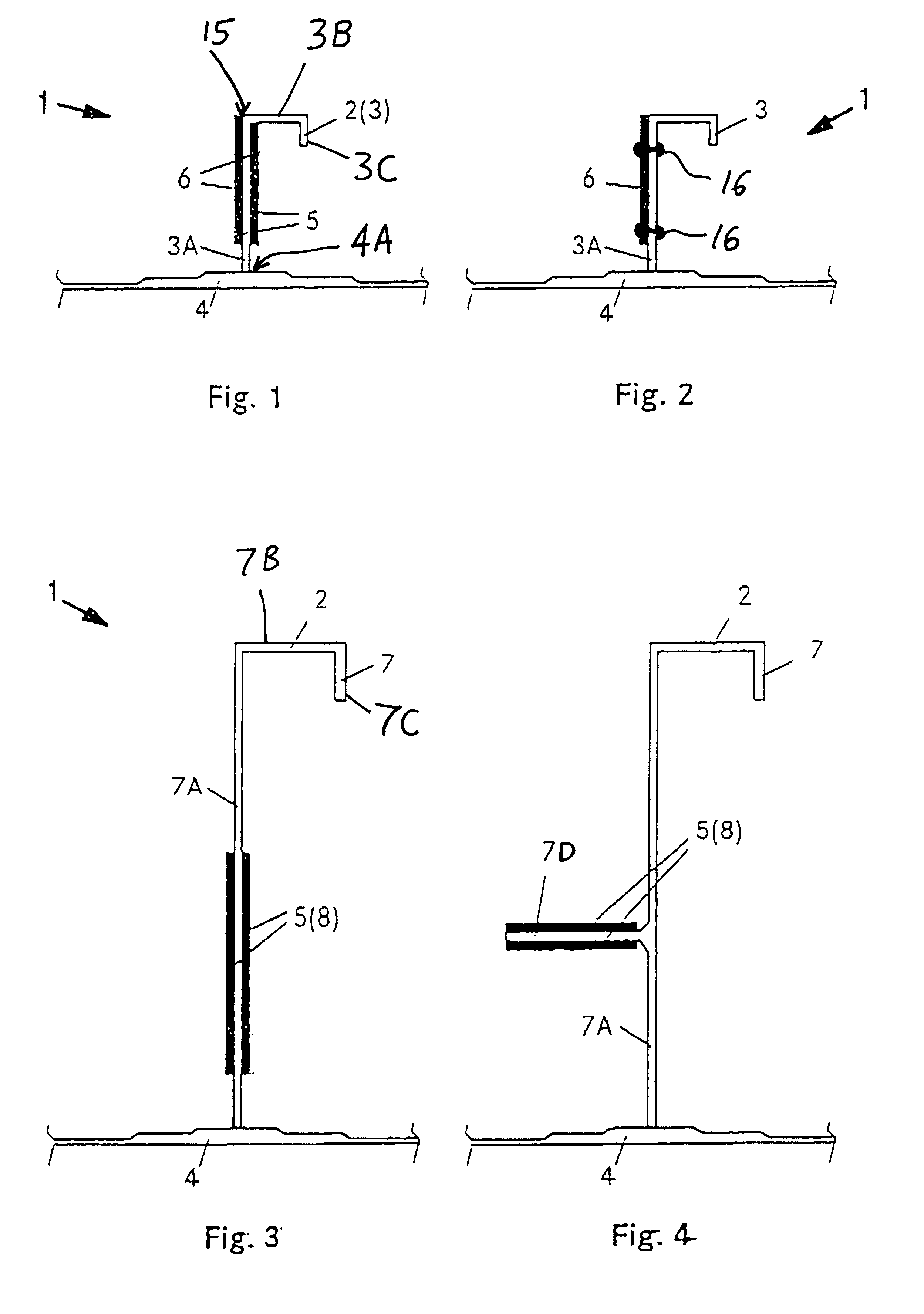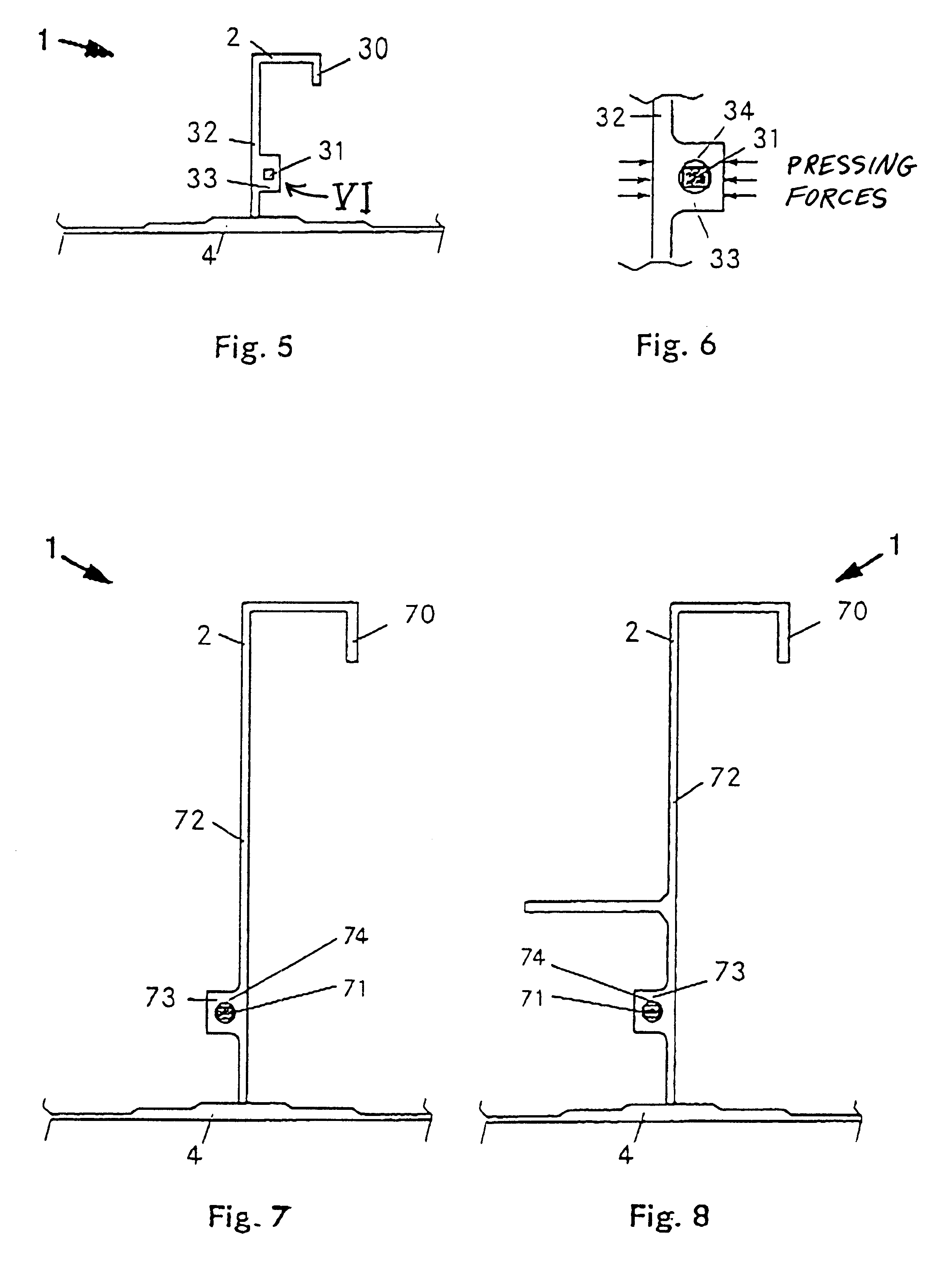The above objects have been achieved according to the invention in a structural shell component for an aircraft fuselage, comprising a skin sheet as well as plural stiffening profile members such as stringers or frame members, whereby the stiffening profile members are at least partially joined to the skin sheet by means of welding. Particularly according to the invention, non-unitary or non-integral strengthening elements are arranged on and secured to the stiffening profile members, before the stiffening profile members are welded onto the skin sheet. Each of these strengthening elements is a separate, non-integral component relative to the stiffening profile member onto which it is secured, and preferably consists of a different material than the stiffening profile member. In this manner, the strengthening and crack stopping effect of the strengthening elements can be optimized or maximized, without unacceptably increasing the weight or the costs of the finished structure. In other words, the strengthening members can consist of material that is stronger and lighter, but more costly, than that of the stiffening profile members, for example.
Further, preferably, the strengthening elements are secured to the stiffening profile members by a non-integral connection method, or joining method, such as riveting or adhesive bonding. Such a non-integral connection provides the crack stopping interruption that is necessary for preventing a crack from propagating into the strengthening elements or thereby also further into the stiffening profile members. Namely, if a crack propagates through the welded joint from the skin sheet into the stiffening profile member, it will not further propagate through the riveted or adhesive joint into the strengthening element or elements. Thereby the strengthening element or elements will maintain its strength intact and hold together the stiffening profile member at the location of the crack, which will inhibit the further propagation of the crack in the stiffening profile member.
The inventive shell structure achieves the advantage that the residual or remaining strength of the shell structure after a crack has formed in the skin thereof, is sufficient so that the welded shell component can also be used in the side and top areas of an aircraft fuselage. Thus, it becomes possible to use such welded fuselage shell components for the entire fuselage of an aircraft, so that the use of riveted and adhesively bonded joints between the stringers or frame members and the fuselage skin can be avoided, in all areas of the aircraft rather than only the lower belly of the fuselage. In this manner, the overall production effort, costs and structural weight can be significantly reduced in comparison to the use of conventional adhesively bonded or riveted shell components.
Moreover, the inventive provision of a two-part, non-integral structure of separate strengthening elements secured onto the stiffening profile members achieves additional advantages over the prior art provision of an integral thickening or protrusion adjacent to the base of each stiffening profile member. Namely, the use of separate or discrete strengthening elements allows the strengthening elements to be made of a different material than that of the stiffening profile members, which allows a greater strength and a greater strength-to-weight ratio to be achieved, without excessively increasing the costs. Also, the strengthening elements may be arranged with an oriented characteristic, for example, in the manner of a tension band or cable that extends along the length of the respective stiffening profile member, so as to exert its strongest retaining forces in a direction that is most effective for holding together the respective stiffening profile member across a crack, in the event a crack should propagate into the stiffening profile member. The non-integral joint between the respective strengthening element and the stiffening profile member provides better crack stopping isolation to prevent the further propagation of a crack through or beyond such a joint.
The inventive structure has thus solved or overcome all of the prior art disadvantages of welded shell components, including those that arise when using stiffening profile members having thickened portions along the roots or bases thereof. If a primary crack develops in the fuselage skin, this crack might propagate through the welded joint into the stiffening profile members, but there the crack propagation will be delayed or entirely stopped by the strengthening elements arranged according to the invention on the stiffening profile members. This in turn has the effect of stopping or hindering the propagation of the crack further in the fuselage skin. The structure of interconnected frame members and stringers remains substantially intact and maintains its strength, so that the residual or remaining strength after the initiation of a crack in the fuselage shell is increased.
 Login to View More
Login to View More 


